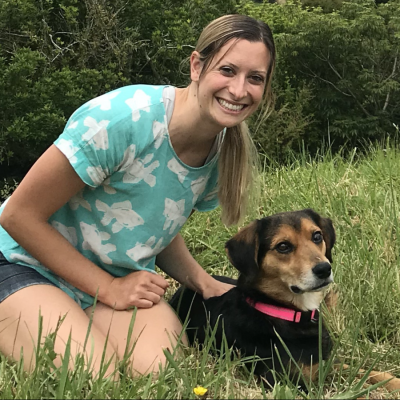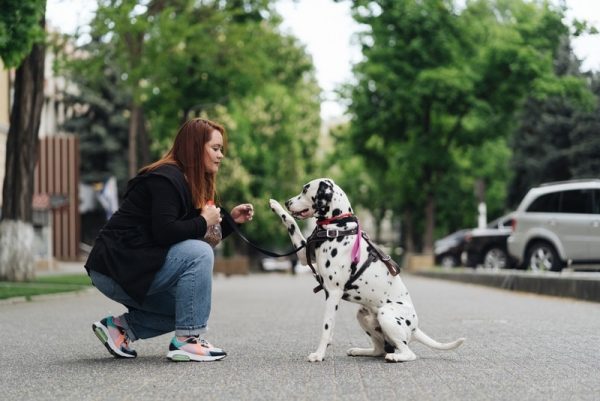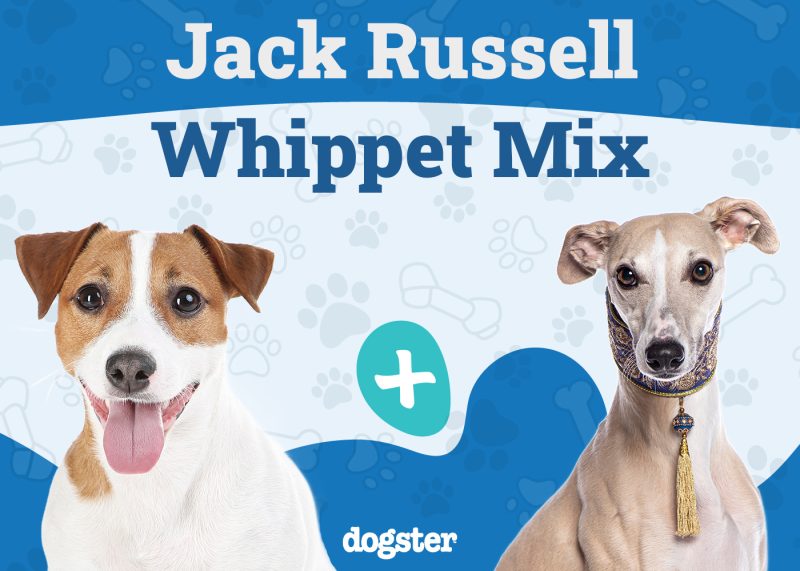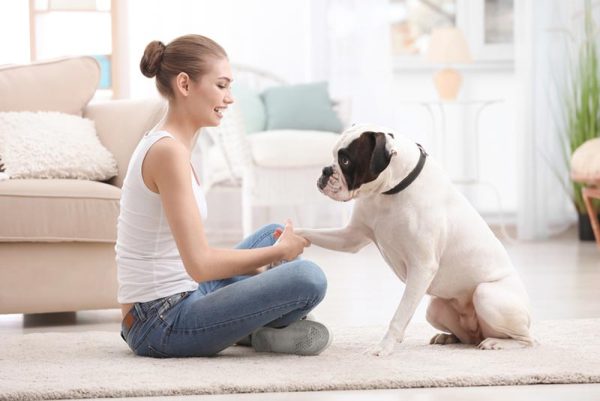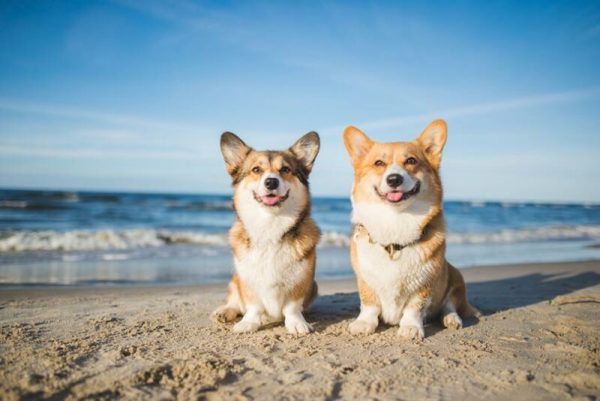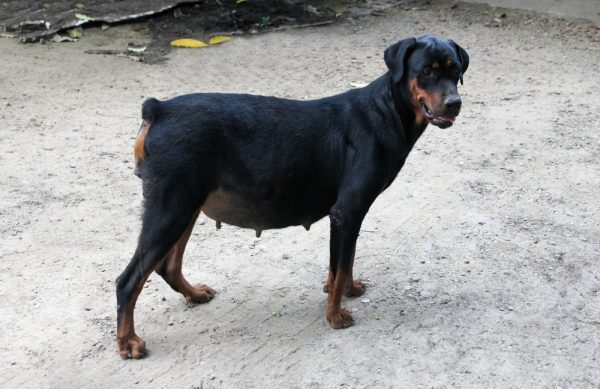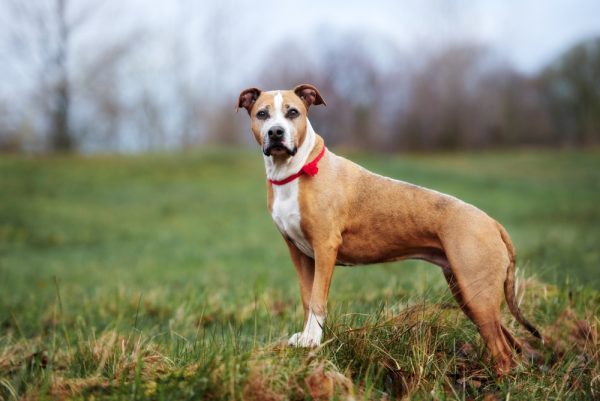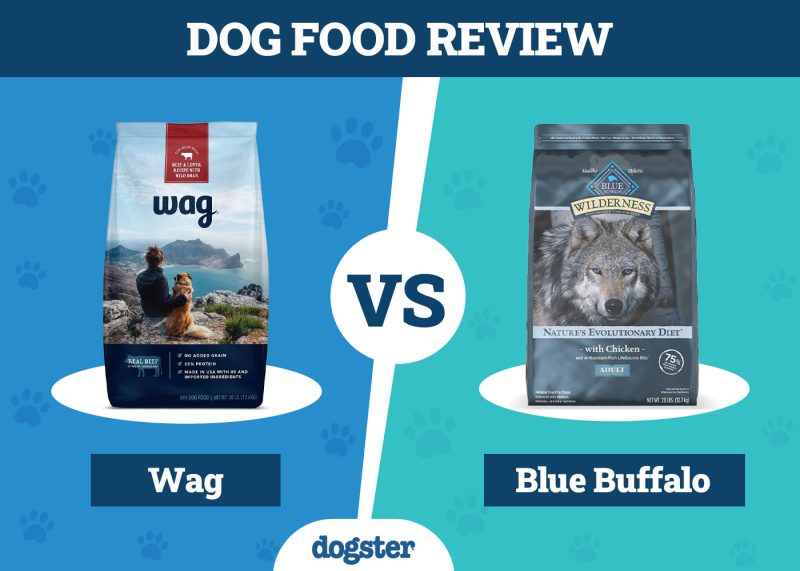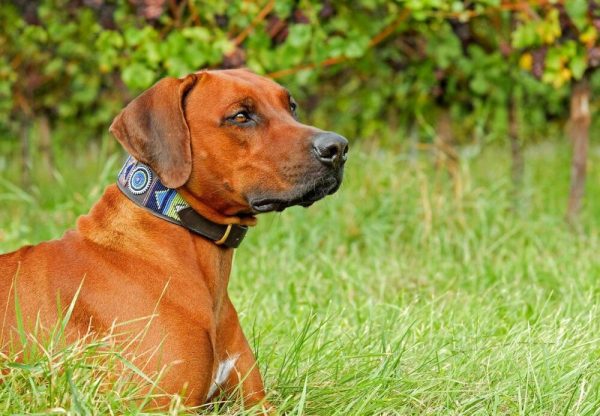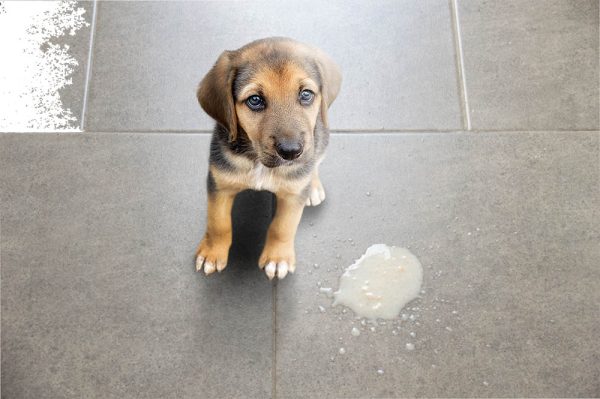In this article
View 2 More +The American Kennel Club’s (AKC) Hound Group is large and diverse, including familiar hunting dogs like Bloodhounds and Basset Hounds, swift sighthounds like Greyhounds, and large-game spitz-type dogs like the Norwegian Elkhound.
While these dogs differ, they all share exceptional, instinctual hunting abilities that have been honed over generations. Though we’re no longer hunters and gatherers, hound dogs are still a part of the family. These 15 classic hound dog breeds are still kept for canine sports, recreational hunting, or just as companions.
 How Are Hound Dogs Classified?
How Are Hound Dogs Classified?
The Hound Group is a group of dog breeds that were bred to help humans track, hunt, and capture prey. The hounds are divided into two groups:
- Scent hounds: These dogs hunt by tracking an animal’s scent. Prime examples are Beagles and Bloodhounds.
- Sighthounds: These hounds use their eyesight to spot game and chase it down, so they have exceptional speed. Examples include Greyhounds, Borzoi, and Whippets.
Other than a keen hunting ability and the relentless pursuit of prey, the dogs in this group can vary in size, looks, and temperament.
The 15 Classic Hound Dog Breeds
1. Basset Hound
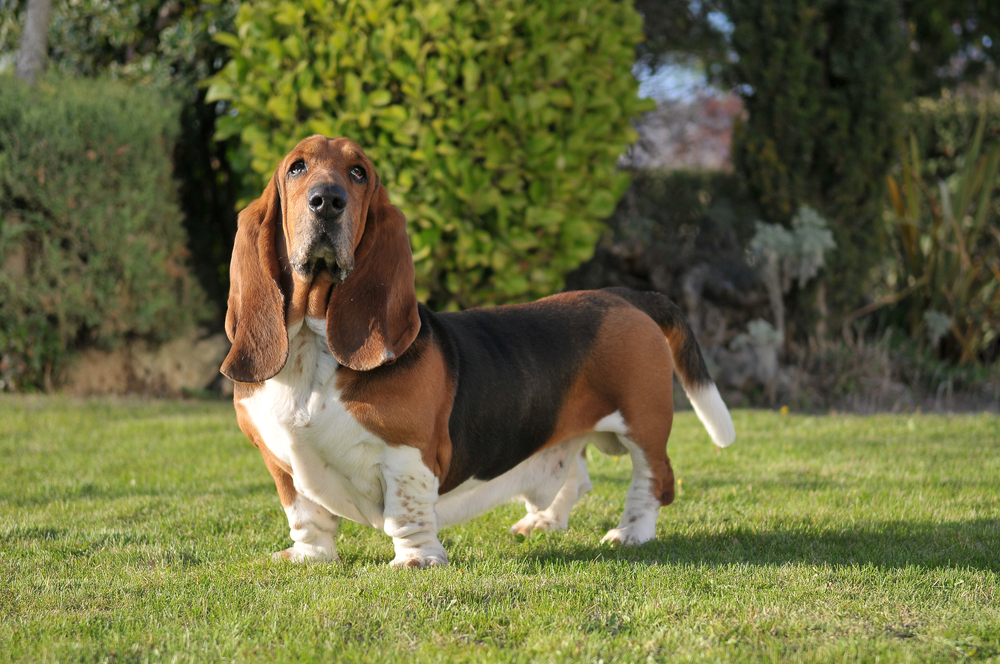
| Origin: | France, Great Britain |
| Lifespan: | 10–12 years |
| Height: | 15 inches |
The Basset Hound is an endearing hound that’s a common companion dog. These dogs may be stubborn, but they’re almost always charming, friendly, and laid back. Basset Hounds have sturdy, heavy bones, strong but short legs, and the strength and stamina of a much larger dog. One of their distinctive traits is the long, velvety ears, doe eyes, and furrowed brows that give them a “sad clown” look. Basset Hounds are unwaveringly loyal but can be loud with their ringing bark.
2. American English Coonhound
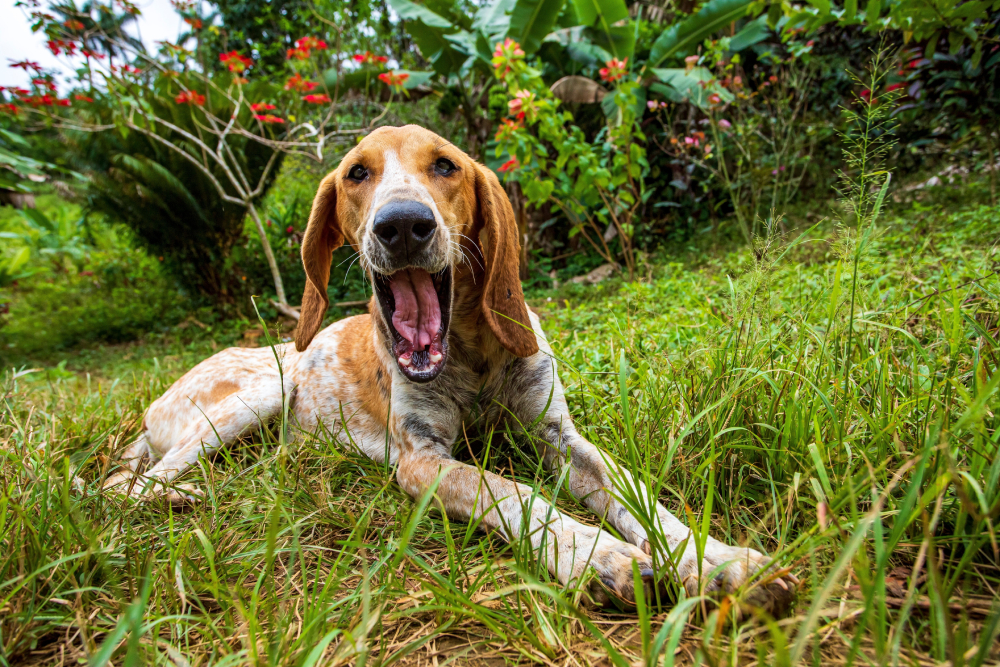
| Origin: | United States |
| Lifespan: | 11–12 years |
| Height: | 21–27 inches |
The American English Coonhound is a sleek, muscular dog with a relentless work ethic. Though sweet as pets, Coonhounds are prized for their speed and endurance. When they’re at home, Coonhounds are mellow, but take pride in their work. Coonhounds won’t back off cornered prey. Because of their determination, Coonhounds can be difficult to train for other tasks. They also have a loud, ringing bark that can be a nuisance.
3. Beagle
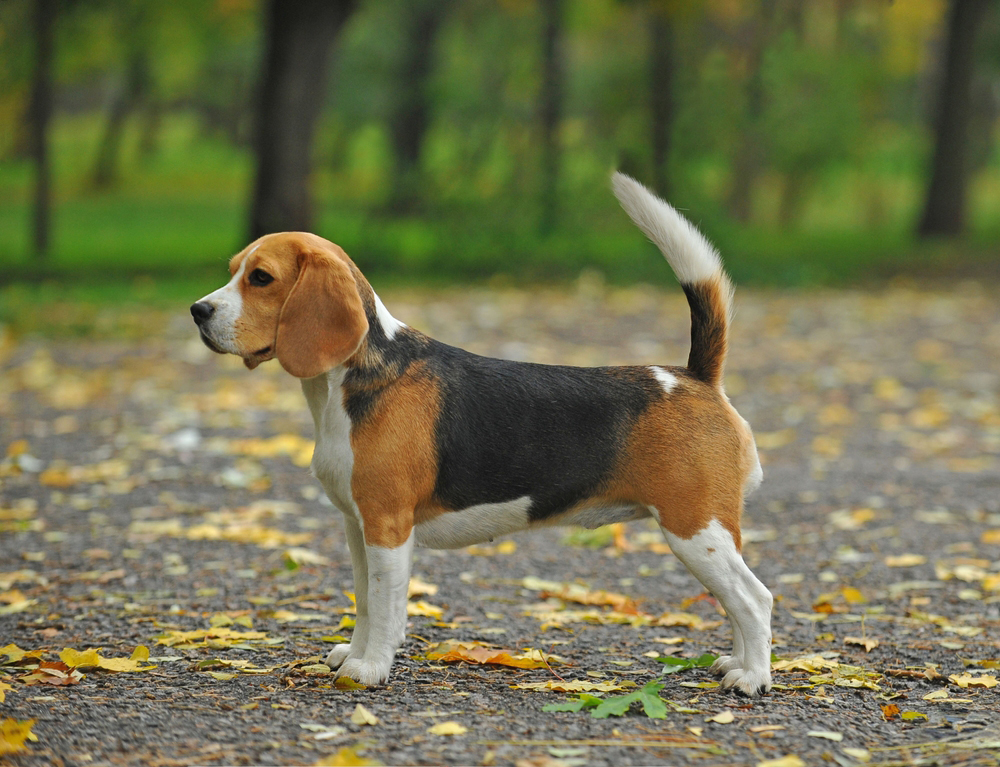
| Origin: | Great Britain |
| Lifespan: | 12–15 years |
| Height: | 13–16 inches |
A happy-go-lucky, beloved breed, the Beagle is an excellent hunting dog and a friendly companion. Unlike some hunting breeds, Beagles were developed to hunt in packs and generally enjoy the company of people, other dogs, and cats. Beagles do well when they have a job like hunting or canine competition, but they can be merry and agreeable pets. However, their natural hunting instincts and distinct vocalizations can lead to nuisance barking, roaming, and other behaviors.
4. Bloodhound

| Origin: | Belgium, France, United Kingdom |
| Lifespan: | 10–12 years |
| Height: | 23–27 inches |
The Bloodhound is a large scent hound that was bred to hunt larger game like deer and wild boar. These dogs are believed to have been descended from hounds kept at the Abbey of Saint-Hubert, Belgium, since the Middle Ages. Though relentless and stubborn in pursuit of game, the Bloodhound is docile and friendly. Bloodhounds enjoy the company of people, other dogs, and children, but their prey drive can be a problem with small pets and wildlife.
5. Black and Tan Coonhound
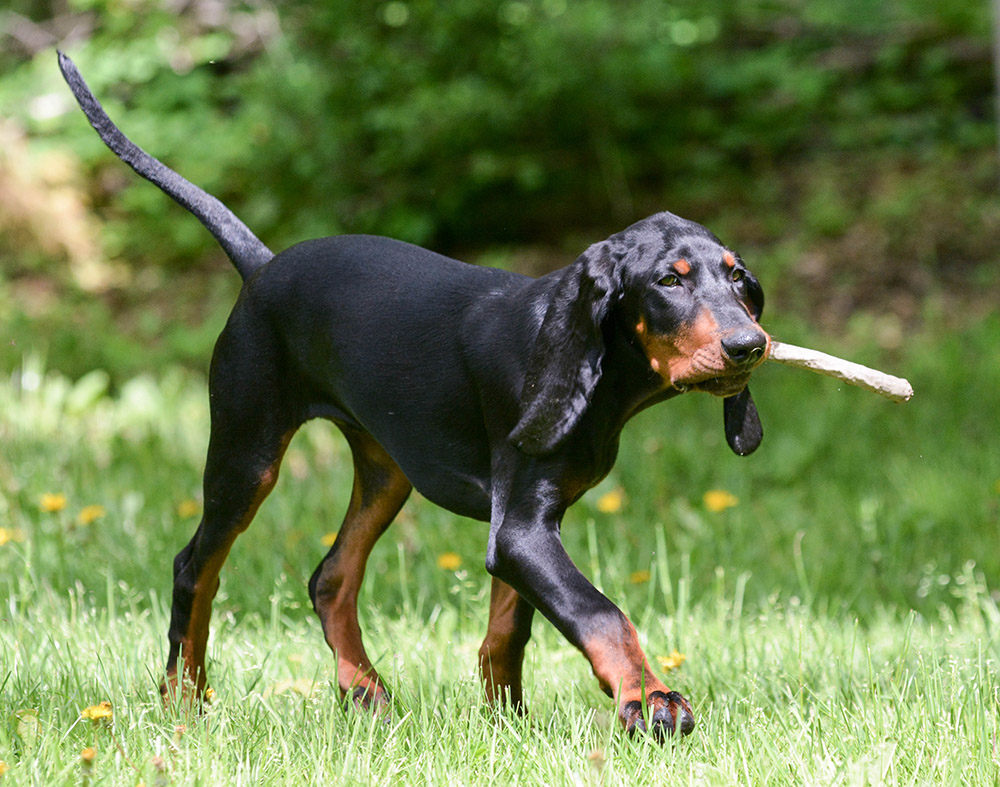
| Origin: | United States |
| Lifespan: | 10–12 years |
| Height: | 23–27 inches |
The Black and Tan Coonhound is a hunting dog breed developed by crossing Bloodhounds with the Black and Tan Virginia Foxhound. These dogs hunt entirely by scent with their sensitive noses. While Black and Tan Coonhounds are athletic and tireless hunters, they can be lazy around the house and enjoy relaxing as much as work. Coonhounds are sociable, and if they’re bored or lonely, they may start their distinct, mournful howling.
6. Bluetick Coonhound
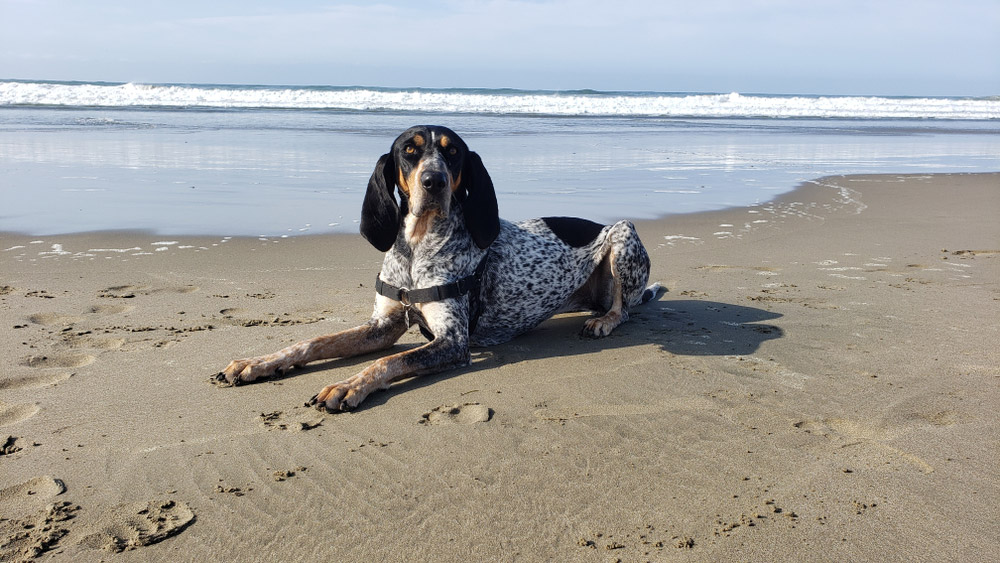
| Origin: | United States |
| Lifespan: | 11–12 years |
| Height: | 21–27 inches |
The Bluetick Coonhound is a sweet, affectionate, and mellow dog that makes a great pet. However, on the hunting trails, Bluetick Coonhounds are unrelenting in their pursuit of prey—or wildlife in your backyard—and can be difficult to manage. Blueticks commonly bay, bawl, and bark, so they may be a poor choice for crowded neighborhoods.
7. English Foxhound
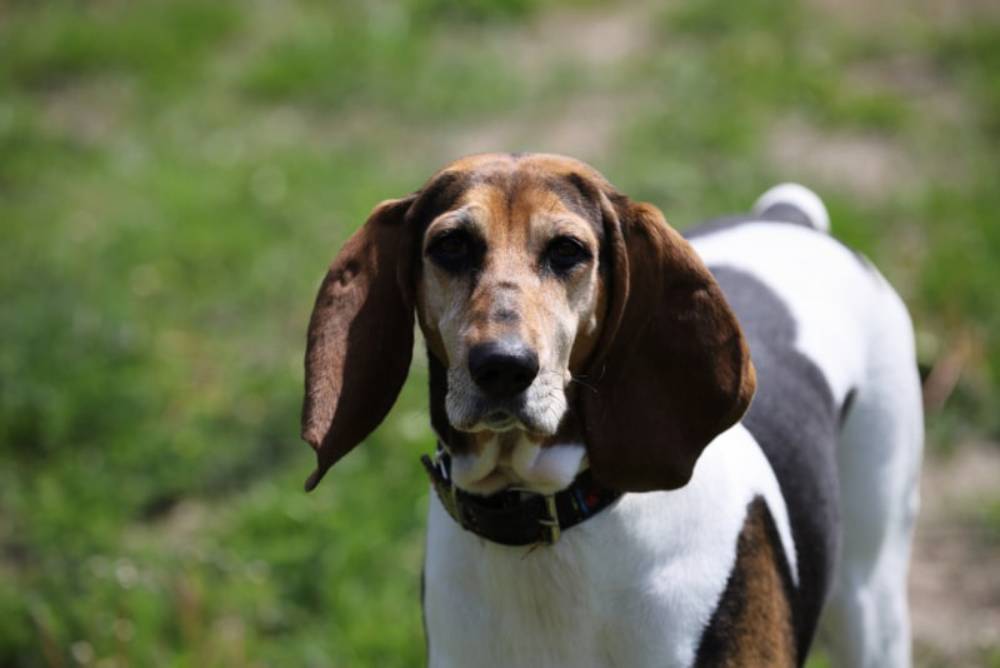
| Origin: | Great Britain |
| Lifespan: | 10–13 years |
| Height: | 21–25 inches |
The English Foxhound is a strong, capable hunting dog with a lot of stamina. These dogs are pack-oriented scent hounds, so they get along well with other dogs. However, English Foxhounds are notoriously difficult to focus on work that’s not hunting, including basic obedience training, and aren’t suited for an idle lifestyle as a family pet.
8. Greyhound
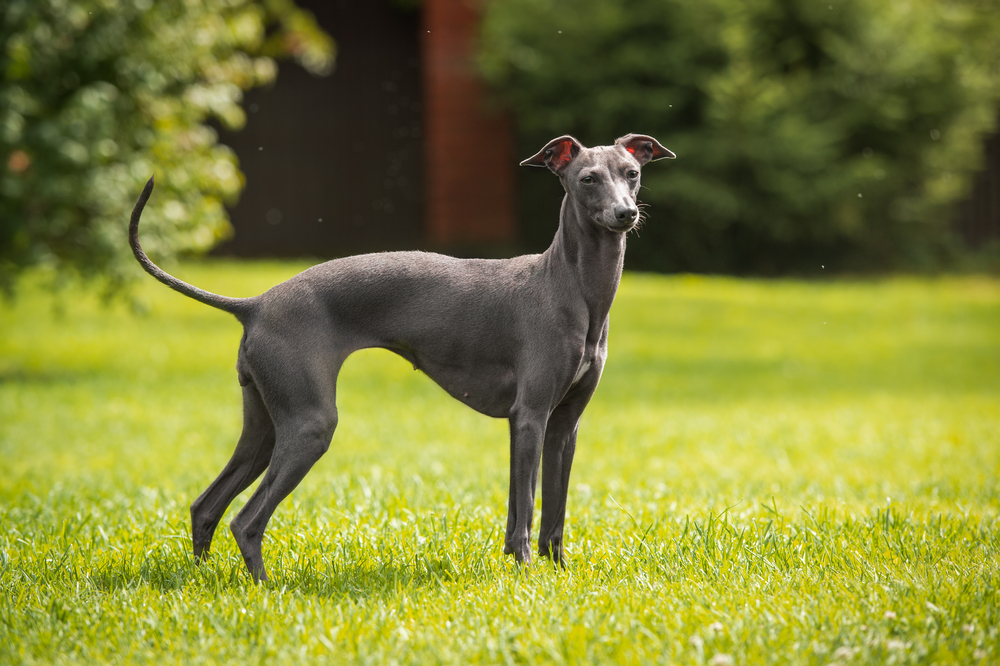
| Origin: | England |
| Lifespan: | 10–14 years |
| Height: | 27–30 inches |
The Greyhound is often associated with sprinting, but these graceful hound dogs have been bred to spot and chase fast game over millennia. One of the first coursing hounds, Greyhounds demonstrate ideal aerodynamics with a sleek, S-shaped body with a deep chest and tight abdominal tuck, a narrow skull, and shock-absorbing paws. Because Greyhounds can spot game on their own, they can be more difficult to train to listen to commands than other hunting breeds.
9. Afghan Hound
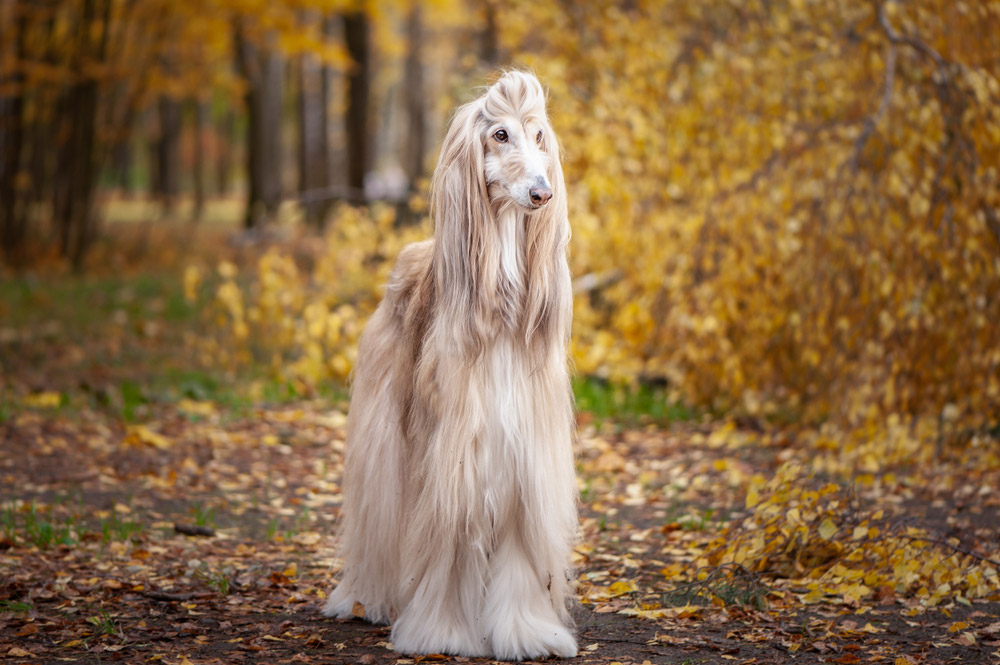
| Origin: | Afghanistan |
| Lifespan: | 12–14 years |
| Height: | 25–27 inches |
The Afghan Hound is a dignified breed with a regal look. These dogs have been prized for their beauty since ancient times, including the silky, flowing coat, but it’s a necessary adaptation that comes from thriving in the harsh climate of Afghanistan’s mountain regions.
10. Harrier
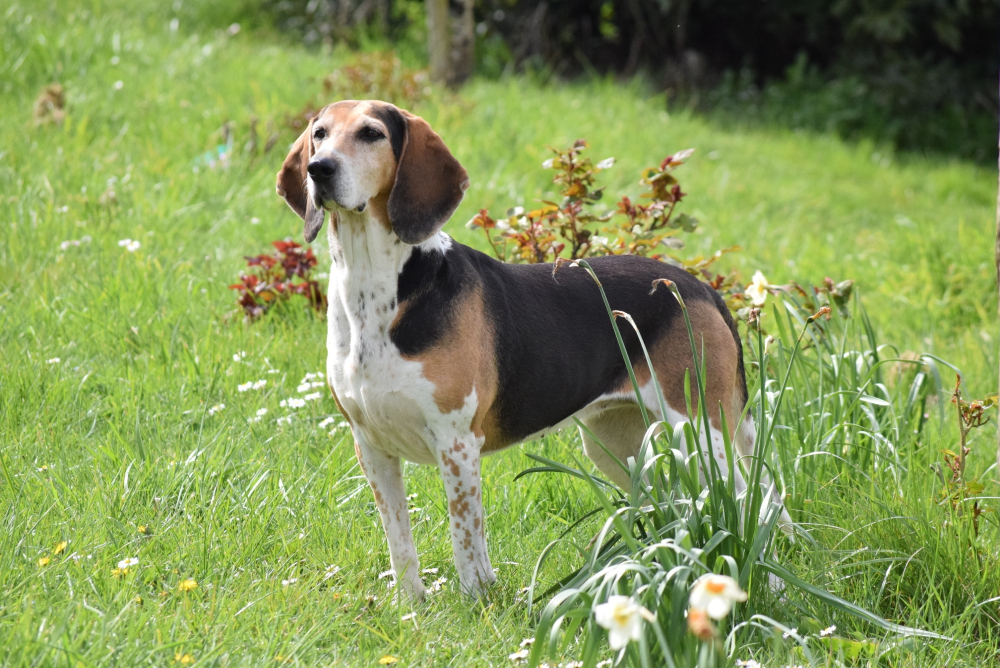
| Origin: | United Kingdom |
| Lifespan: | 10–12 years |
| Height: | 19–21 inches |
Resembling a Beagle, the Harrier is a larger, more powerful version of the favorite pack-hunting dog. Equally prey-driven, the Harrier was developed in medieval England to chase hares. These dogs are outgoing and friendly, but they can be stubborn and difficult without solid training.
11. Irish Wolfhound
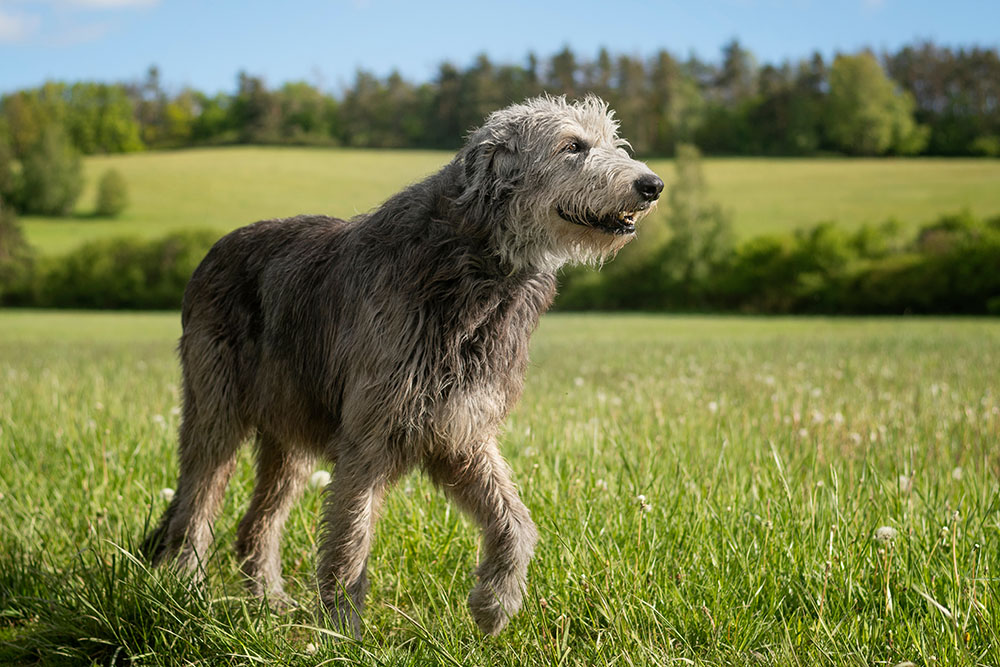
| Origin: | Ireland |
| Lifespan: | 6–10 years |
| Height: | 30–32 inches |
The Irish Wolfhound is a massive but calm and gentle hound breed. The tallest of all recognized breeds, the Wolfhound was developed to hunt big game. The Wolfhound has been around for thousands of years, originally hunting the now-extinct Irish elk, then wolves, until large game was hunted to extinction. They only exist today because of dedicated breeding efforts. Though large, Wolfhounds are famously serene, gentle, and reliable as companion dogs.
12. Norwegian Elkhound
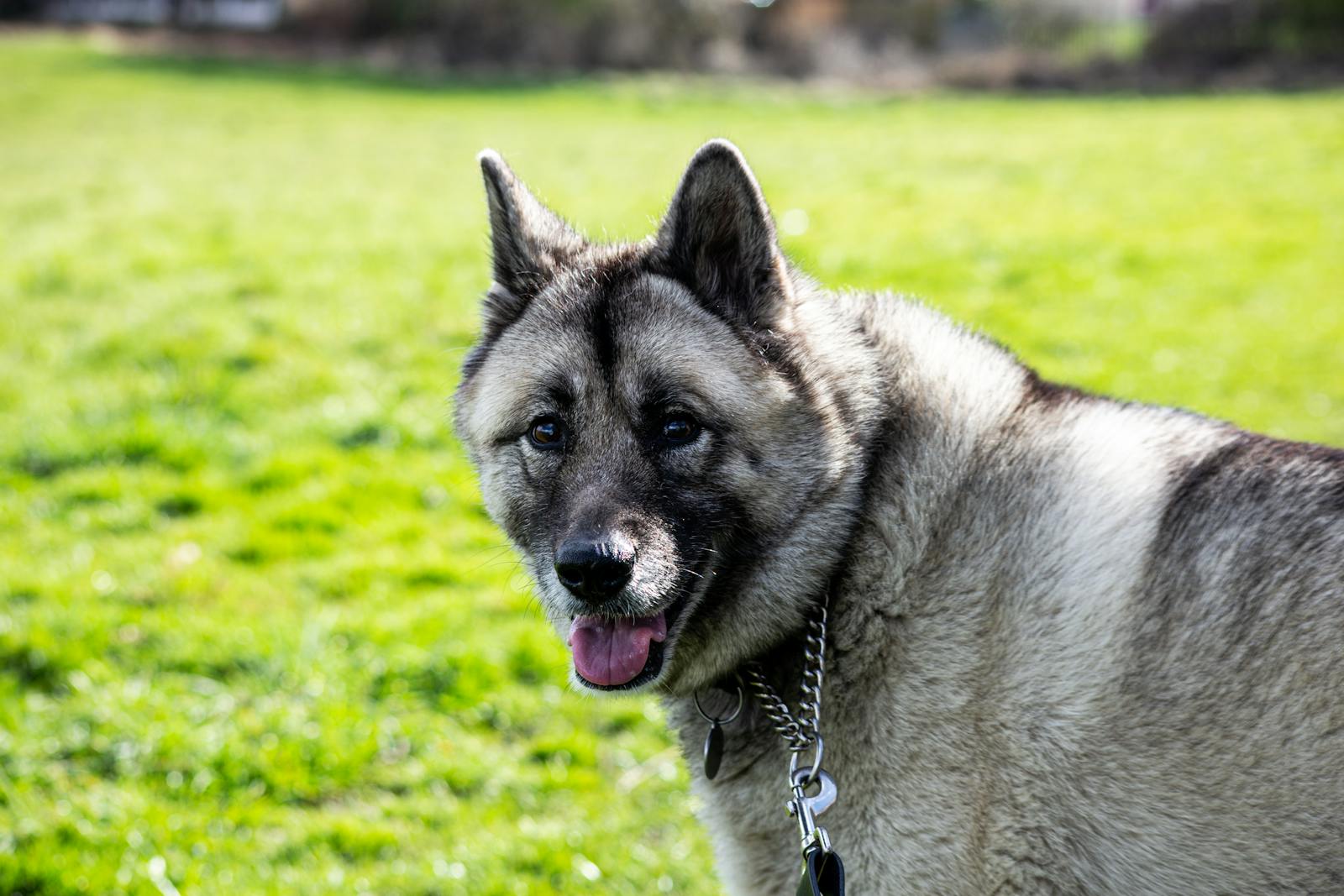
| Origin: | Norway |
| Lifespan: | 12–15 years |
| Height: | 5–20.5 inches |
The Norwegian Elkhound is a Northern spitz-type dog and the national dog of Norway. Though intimidating in appearance, Elkhounds are calm and friendly. As companion dogs, Elkhounds excel at watchdog duty, agility and herding trials, and other canine sports.
13. Rhodesian Ridgeback
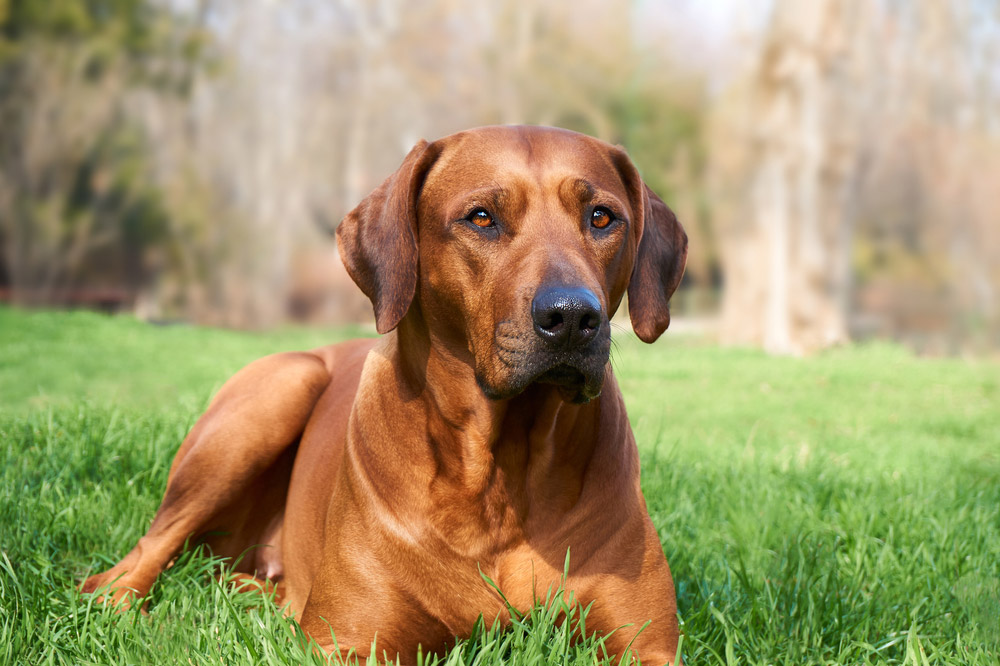
| Origin: | Southern Africa |
| Lifespan: | 10–12 years |
| Height: | 24–27 inches |
Known as a “Renaissance hound,” the Rhodesian Ridgeback is an all-purpose hunting dog that was developed in Africa to track lions. These dogs have a distinctive ridge on their back, or a stripe of hair that grows backwards, and a powerful, athletic frame. Ridgebacks are not used for tracking as much anymore, but they can make excellent companion dogs for experienced owners.
14. Pharaoh Hound
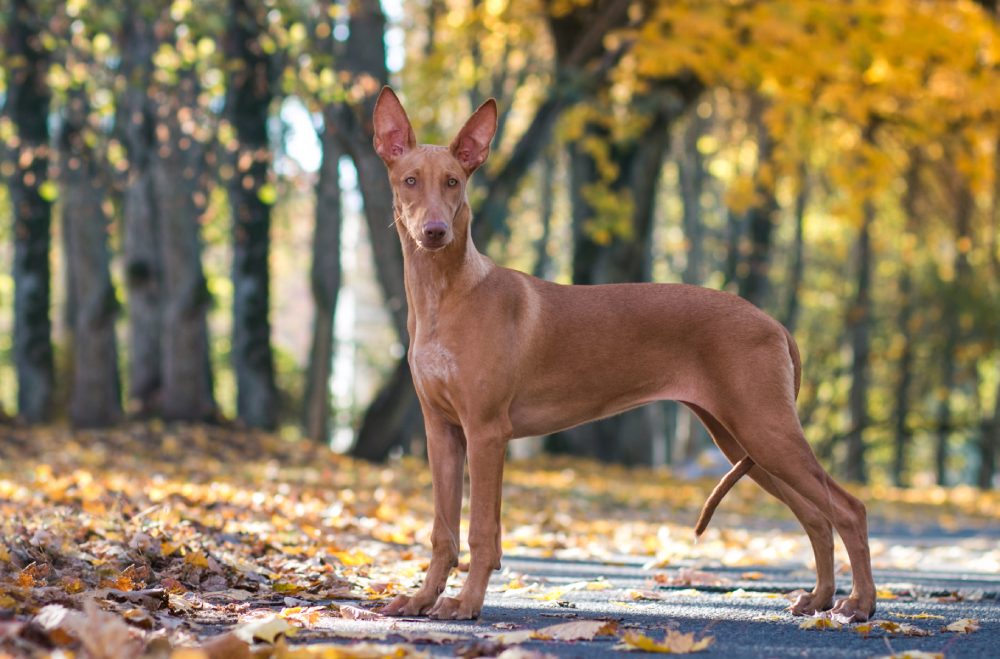
| Origin: | Malta |
| Lifespan: | 11–14 years |
| Height: | 21–25 inches |
The Pharaoh Hound, or “Blushing Dog” of Malta, is an elegant sprinting hound bred to course small game over the challenging terrain of the islands. One of the ancient breeds, the sleek Pharaoh Hound developed from a swift and agile hunter to an affectionate and easygoing family dog.
15. Dachshund
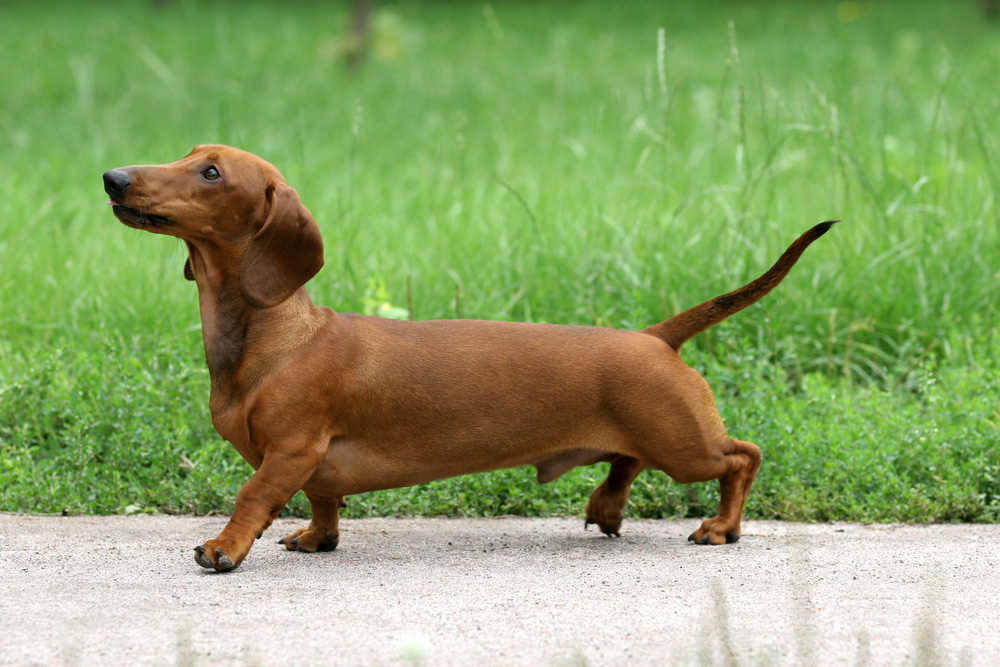
| Origin: | Germany |
| Lifespan: | 12–16 years |
| Height: | 5–9 inches |
Affectionately known as a “wiener dog,” the Dachshund is a long, low-slung hound breed that was bred into a unique shape to burrow into badger dens. These dogs come in two sizes and three coat types, but they all share a mix of loyalty, alertness, and a stubborn streak. Though they no longer hunt badgers, Dachshunds have a strong scenting ability and prey drive, so they can be a challenge with small animals and wildlife.

Are Hound Dogs Right for Me?
Hound dogs are an obvious choice for owners who hunt, but that’s not their only virtue. Depending on the breed, hounds can make great canine competitors in hunting competitions, rally, agility, and more. They’re also a good choice for outdoorsy types who want a running or hiking companion, but some breeds are happy to be relaxed, family dogs and enjoy children.
However, hounds aren’t ideal for every owner. Many of these breeds were taught to vocalize to alert hunters to prey’s location, so it’s common for these dogs to develop nuisance barking. Some hounds require a lot of exercise—more than a casual owner can provide—and may take off in pursuit of prey. Naturally, most hounds have a high prey drive that’s difficult to curb, so keep that in mind if you have small animals, cats, or a lot of local wildlife.

Final Thoughts
From the purpose-built Dachshund to the massive Irish Wolfhound and its now-extinct prey, hounds run the gamut. Whether you want a hunting companion or an athletic competitor, hound dogs can be an excellent choice for the right owner.
Related Reads:
Featured Image Credit: Billion Photos, Shutterstock
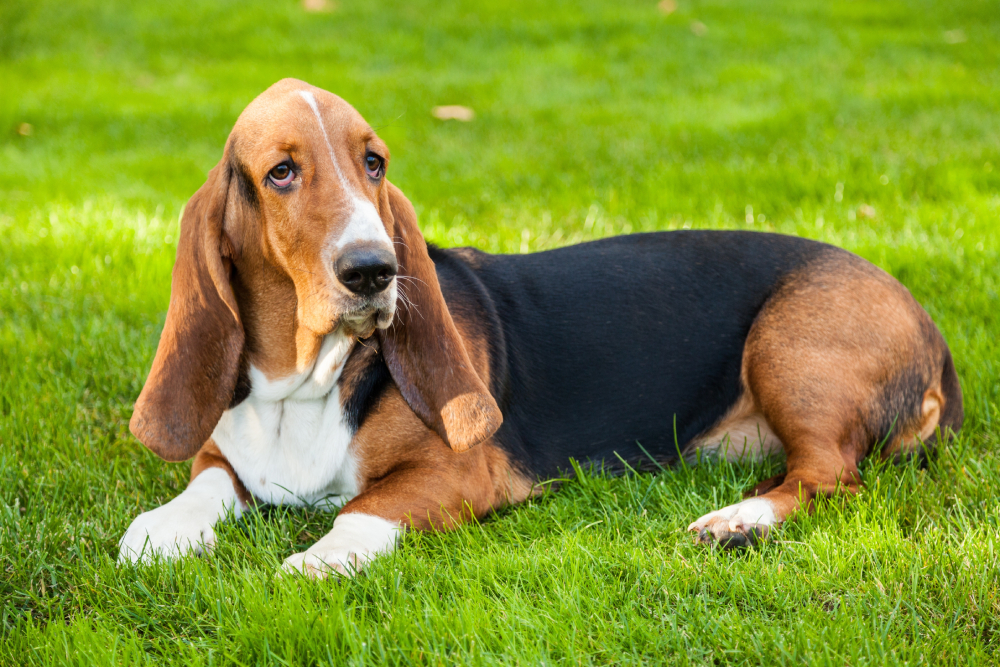
 How Are Hound Dogs Classified?
How Are Hound Dogs Classified?